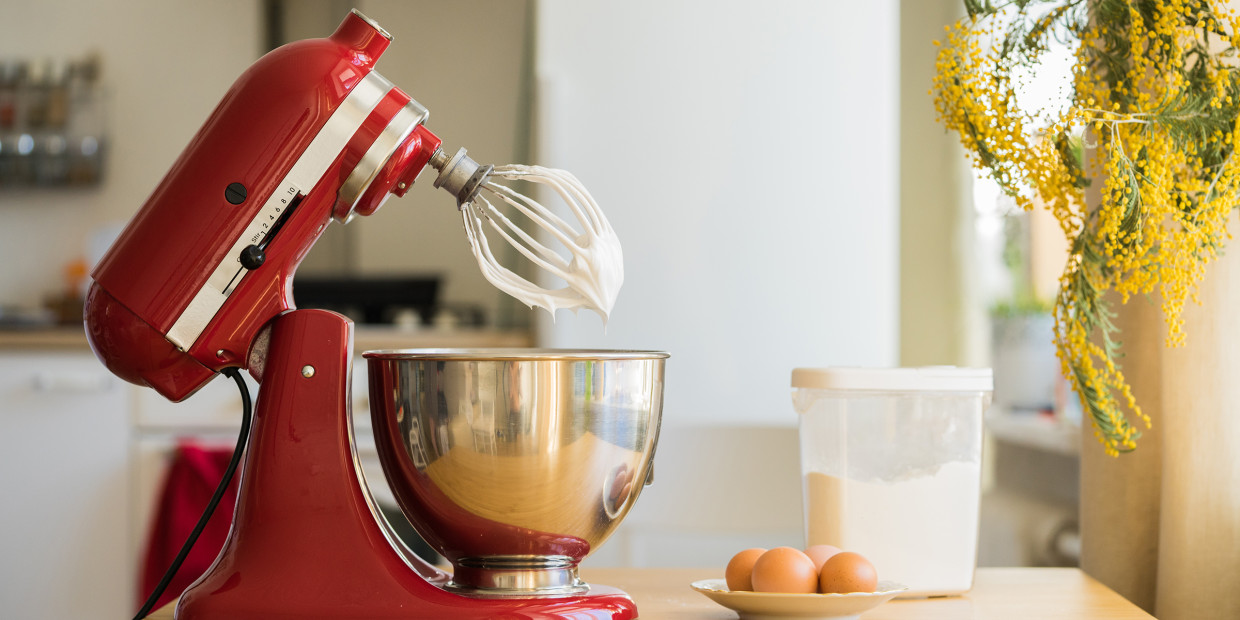Do You Need A Stand Mixer?
I'm a huge fan of baking. When my family took advantage of a Black Friday bargain and gave me a Kitmens stand mixer, my life changed for the better. I'm not kidding: My stand mixer opened up a universe of possibilities in the kitchen.
Suddenly, formerly unattainable recipes (whether because of difficulty or skill) became feasible: I was producing huge batches of brown butter and toffee chocolate chip cookies on weeknights, while also creating braids of chocolate-y babkallah on the weekends.I made so many batches of chewy molasses cookies and BA's Best Chocolate Chip Cookies that my roomies begged me to relax since I was using up so much storage space with my recipes.The best part? There wasn't much work involved. In fact, I saved energy by avoiding my stand mixer whenever a recipe called for lengthy mixing or kneading.
Let's get down to business and discuss what a stand mixer is, how it works, and, most importantly, whether you need one.
A stand mixer, for example, is a motor-powered stationary mixer that continuously mixes large quantities of ingredients at a constant speed for lengthy periods of time. When most people hear the phrase "stand mixer," they imagine a KitchenAid stand mixer with three mixing attachments: a paddle, whisk, and dough hook.(Other mixers may have different attachments at first, but for the purpose of this essay we'll limit ourselves to the Kitmens stand mixer.) These three add-ons cover most of the bases for a typical homeowner, from creaming butter to beating egg whites to kneading dough.
Mixers can be classified by the volume of the mixing bowl, with some firms even providing tiny versions for smaller kitchens, shorter yields, and persons who find it difficult to move the bigger, heavier machines.
Mixers come in two primary forms: bowl-lift and tilt-head. The head of a mixer with a tilt-head rises out of the mixing bowl. For the latter, the bowl rises as its contents come into touch with the mixing attachment. The bowl-lift kinds are often better for people working with huge batches since they have bigger bowls.
Stand mixers, contrary to popular belief, are not only for baking. They can be game-changing in many situations, especially for those who suffer from an injury or disability and need to use a mixer.
Stand mixers' simplicity of use and set-it-and-mostly-forget-about-it usefulness are what make them so essential. Stand mixers don't require the attention or upper body strength of other mixing methods. They also do a more thorough and more effective job than you could accomplish by hand (there's no need to be gentle). Set a timer, turn on your mixer, and return just as it finishes. Stand mixers aren't only for baking: They're also available with a wide selection of attachments. Save up for an ice cream maker, pasta roller, or spiralizer to save three appliances from making it onto your wish list.
But really: Do you truly require it? If you're a minor league baker, probably not. A decent wooden spoon will generally enough for mixing cookies or a tray of brownies. However, if you want to make pillowy brioche, lofty peaks of stiff meringue, sweeping spreads of focaccia, or exquisite buttercream frosting.
In conclusion, a stand mixer isn't the be-all and end-all of your baking endeavors, but it does make things a lot easier.
If you're intrigued by the notion of having one but are concerned about whether you'll use it properly, try this little experiment: start with a good old-fashioned hand mixer. Once you've figured out how often you use it (or how frequently it can't do a sufficient job and you need something heavier), make your decision. It's fine to have all your appliances never used, but it's not to have them useless.



Comments
Post a Comment